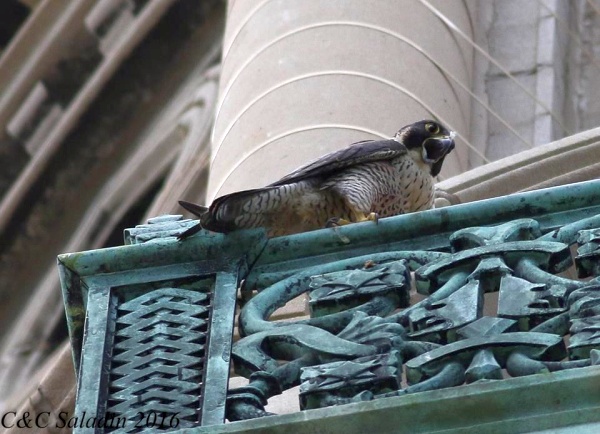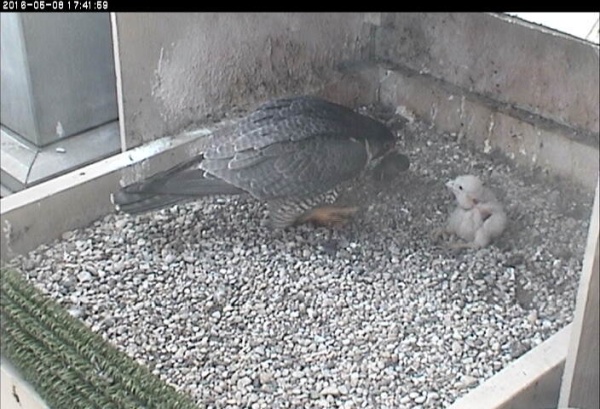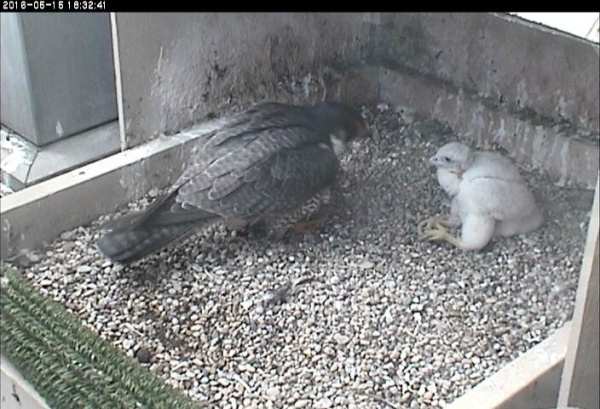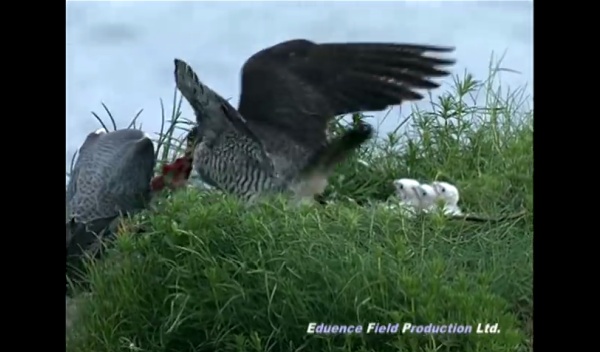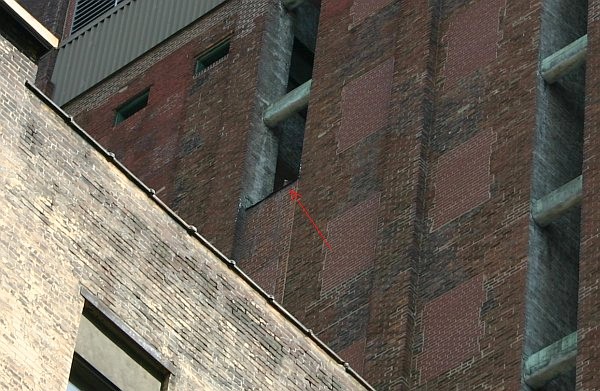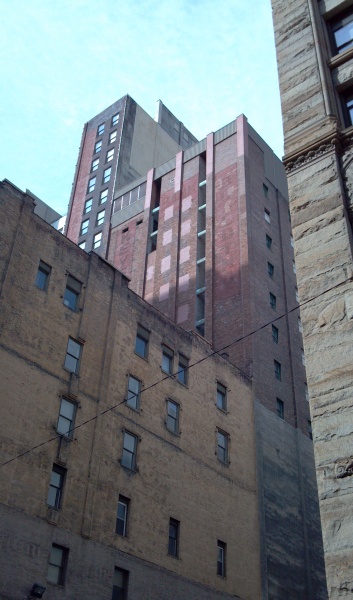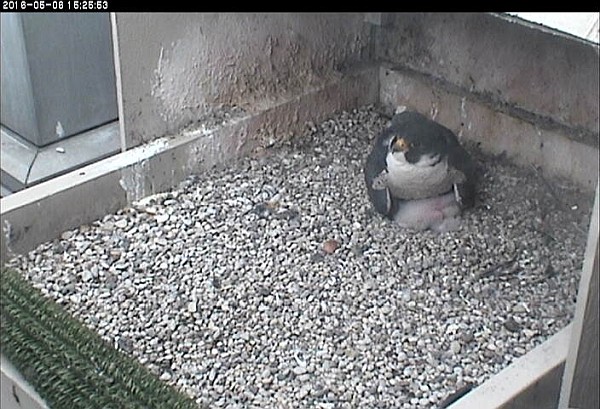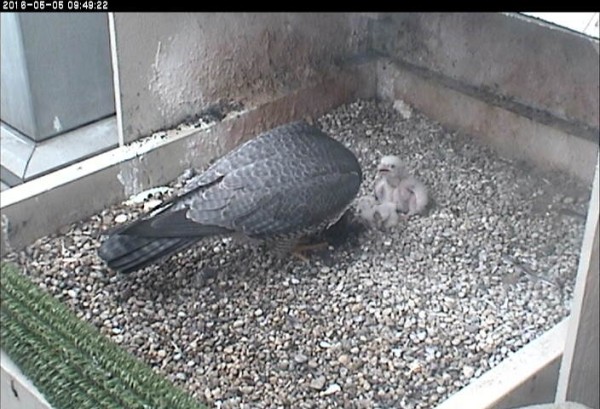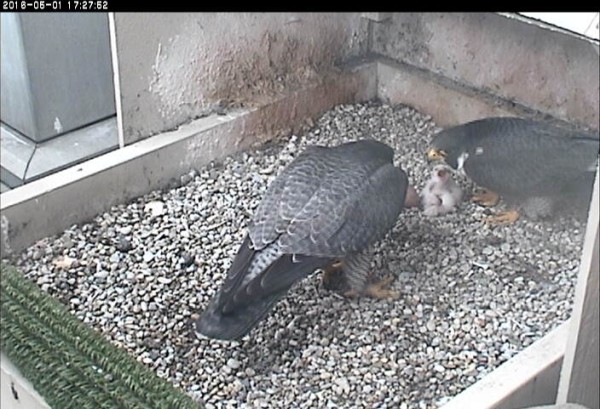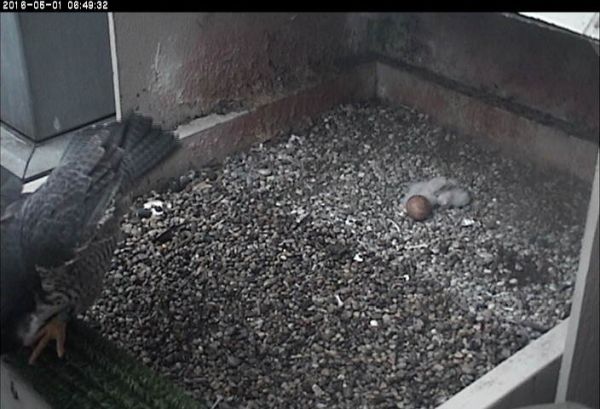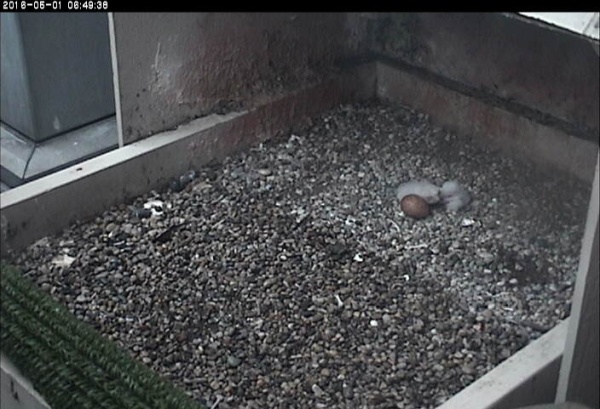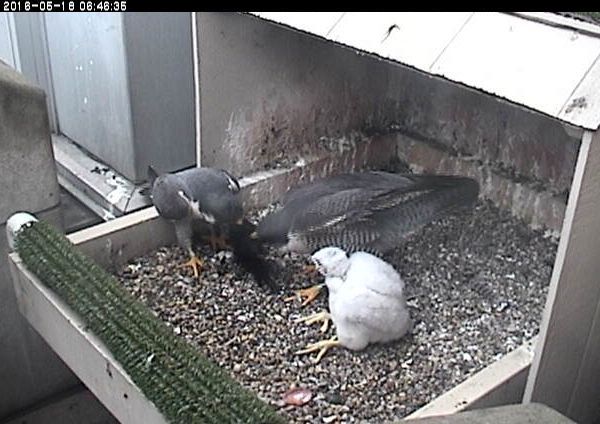
In years past, Pitt peregrine watchers were used to seeing a very messy nest on camera. Dorothy, the previous resident female, usually plucked prey at the nest soon after she was done brooding. In those years the nest normally looked like this.
This year the nest has been amazingly clean … until yesterday. At 6:45am Terzo brought a black-feathered prey item to the nest. Hope took it from him and plucked it while C1 watched. (It was a male red-winged blackbird.)
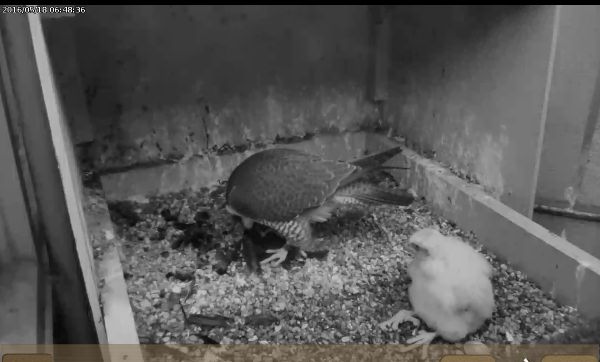
I finally figured out there’s a good reason for making a mess. C1 will soon be old enough to eat on his own and will need to know how to pluck prey and tear it up. The best way to learn is by watching. Yesterday Hope showed him by example.
By the end of the month C1 will be grabbing the food and plucking it himself. In the meantime I’m sure he’ll watch more food preparation demonstrations.
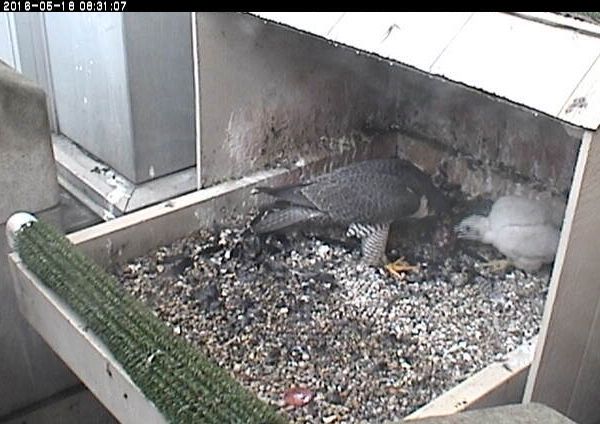
Breakfast is served.
(photos from the National Aviary falconcam at Univ of Pittsburgh)
